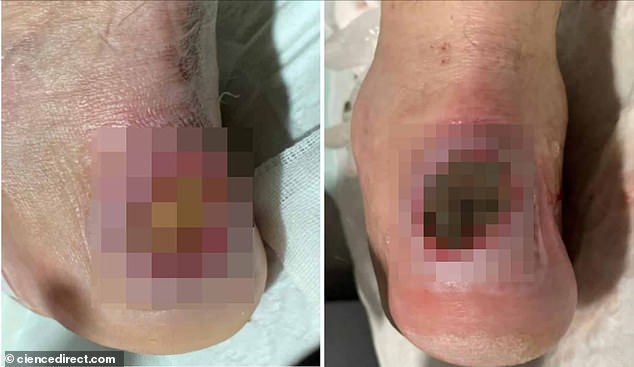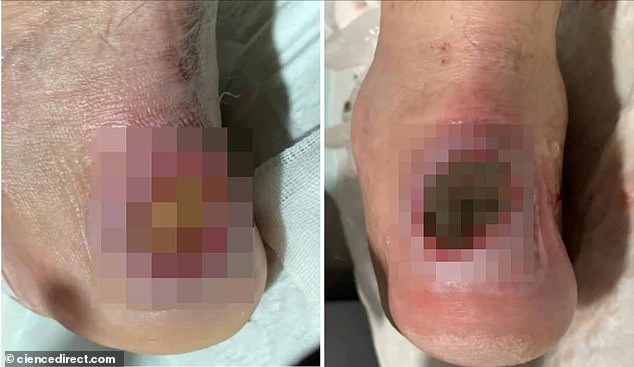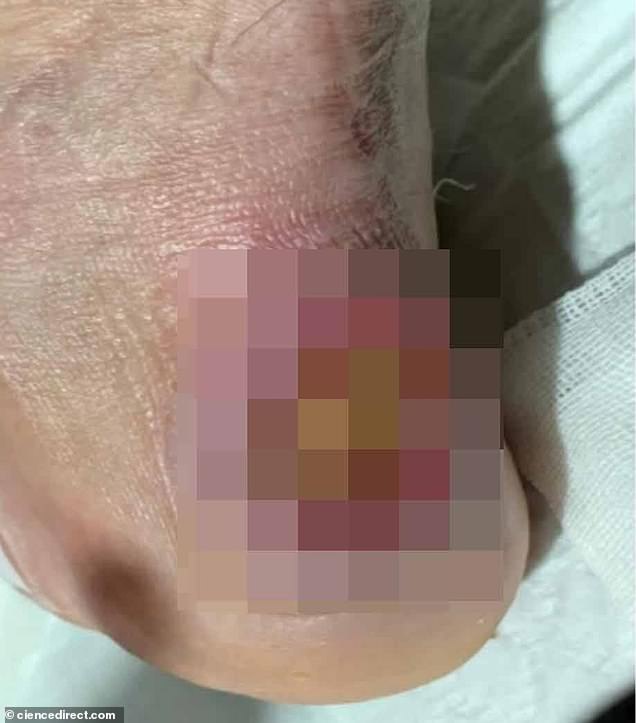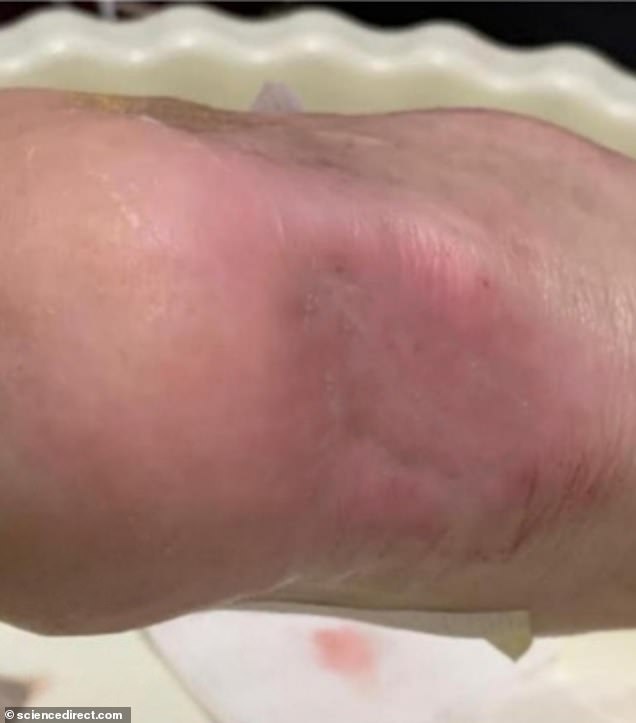Medieval therapy returns: Doctors cure 46-year-old man’s infected foot with maggots, honey and human placenta after modern antibiotics fail





Doctors have cured the infected foot of a 46-year-old diabetic using maggots, honey and a human placenta after regular antibiotics failed to help.
Foot ulcers are a common complication of diabetes. Poor circulation, nerve damage, and high blood pressure can predispose people with diabetes to ulcers.
When the patient presented to a hospital in Iran, the pressure sore on his heel, which was 7 cm long, had been present for about six months.
Although the patient had already tried to cure the infection with conventional treatments, such as wound cleaning and antibiotics, these had no effect.
Instead, doctors treated the infected wound using unusual methods, some of which are available through the NHS.

Doctors cure infected foot of 46-year-old diabetic man using maggots, honey and human placenta

After the maggot therapy, the wound was treated with Med honey, a special honey with proven antibacterial and anti-inflammatory properties.
The case study A study published in the International Journal of Surgery Case Reports found that wound cultures from the patient, who had suffered from type 2 diabetes for 15 years, showed a bacterial infection that was resistant to multiple drugs.
Doctors removed dead tissue from the man’s heel, allowing the skin to regenerate.
The patient then underwent four rounds of maggot therapy – a treatment that may sound extreme, but is sometimes used by NHS doctors to combat infections.
In this treatment, also known as maggot cleaning, specialists use greenbottle larvae. These feed on dead tissue and release chemicals that break down bacteria and stimulate the healing process.
When the patient presented to a hospital in Iran, the pressure sore on his heel — which was 7 cm long — had been present for about six months. But after three months of treatment, the sore had healed
These maggots are specially bred in a laboratory using eggs that have been treated to remove bacteria.
They are placed on the wound and covered with gauze, under a tight bandage, which keeps them on the wound and out of sight. After a few days, the bandage is cut away and the maggots are removed.
After the maggot therapy, the wound was dressed with Med honey, a special honey with proven antibacterial and anti-inflammatory properties.
The dressings were changed every 48 hours to maintain a moist wound environment and support the healing process.
Simultaneously with the Med-honey application, the wound received a Human Amniotic Membrane (HAM) treatment, in which the inner part of the placenta is used. The patient had eight sessions over a month.
First, the membrane was carefully cleaned and disinfected to ensure it was safe. The bioactive components, including growth factors and cytokines — crucial for helping the body’s immune and inflammatory responses — were preserved.
“The application process resembled the gentle unfurling of a precious tapestry, with the membrane acting as a scaffold for cellular activities,” the study authors wrote.
Growth factors in the membrane helped heal the damaged tissue, while the cytokines triggered biological responses within the wound’s “microenvironment,” the study explains.
The barrier function of the membrane not only protected the wound from external threats, such as microbial invasion, but also retained moisture, which promoted tissue regeneration.
Over a three-month period, doctors saw a “remarkable improvement”: the wound had shrunk significantly, the inflammation and infection decreased and the wound eventually closed.






